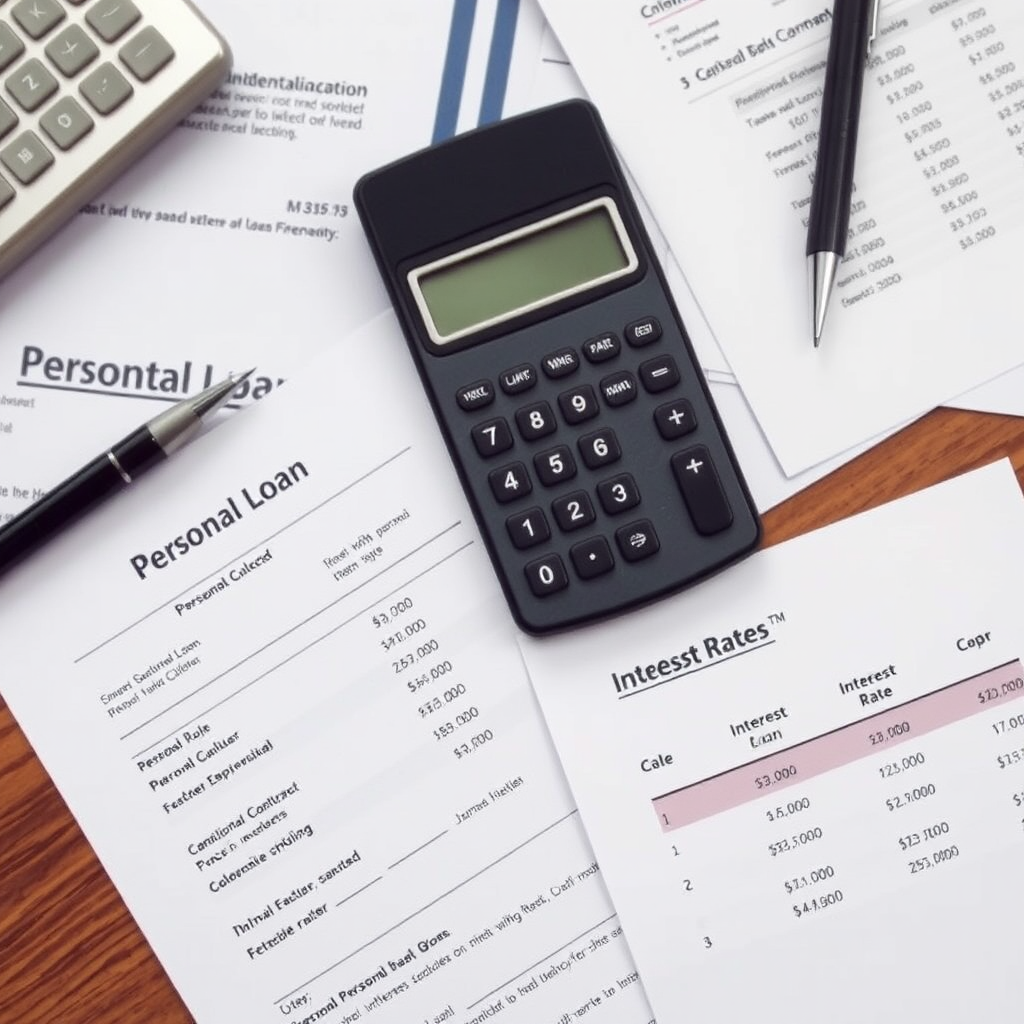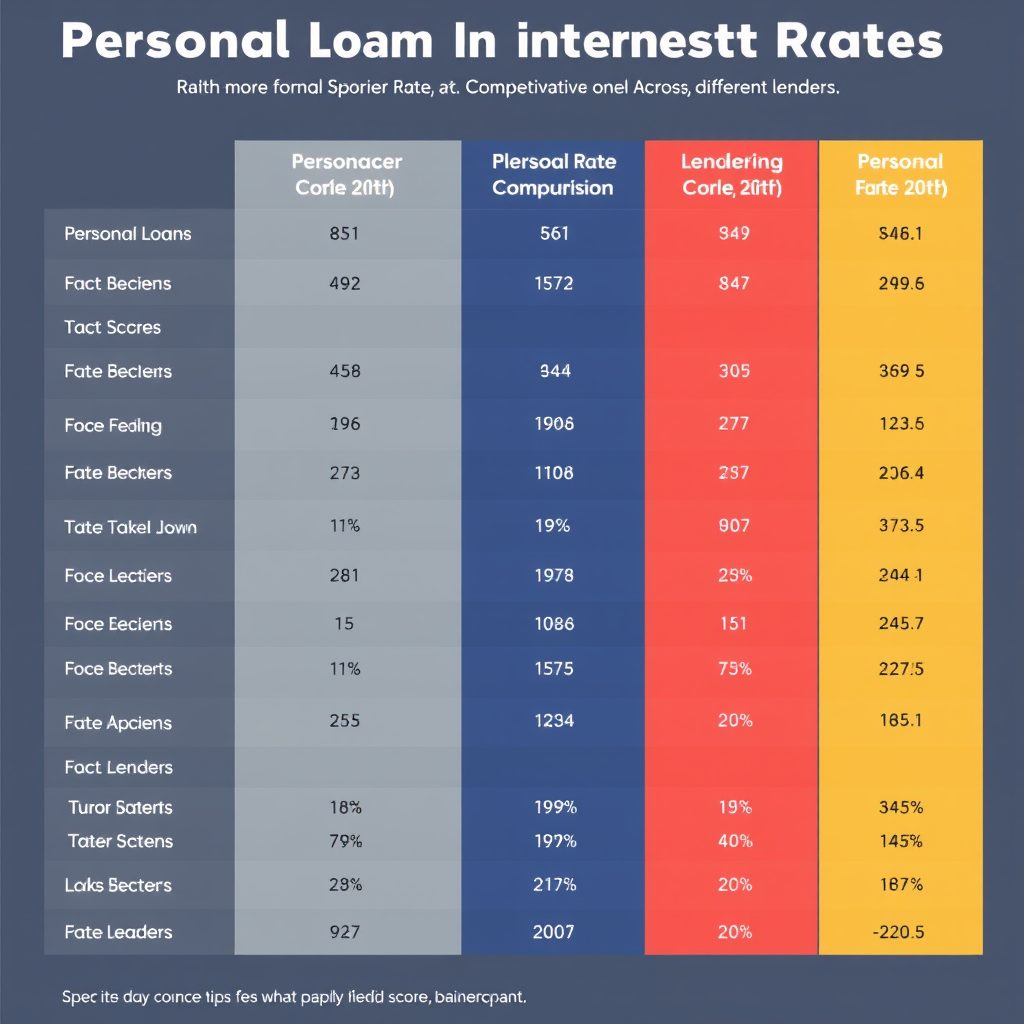Personal Loans: Your Complete Guide to Financing Solutions
Discover comprehensive personal lending options, understand credit requirements, and learn how to secure the best rates for your financial needs.
Understanding Personal Loans
Personal loans offer flexible financing solutions for various life expenses, from home improvements to debt consolidation. These unsecured loans provide borrowers with lump-sum funding that can be repaid over fixed terms, typically ranging from 2 to 7 years.
Unlike secured loans that require collateral, personal loans are based primarily on your creditworthiness, income stability, and debt-to-income ratio. This makes them accessible to many borrowers while offering competitive interest rates for qualified applicants.

Types of Personal Lending Options
Unsecured Personal Loans
Traditional personal loans that don't require collateral. Interest rates typically range from 6% to 36% APR based on credit score and financial profile.
- No collateral required
- Fixed interest rates
- Predictable monthly payments
Debt Consolidation Loans
Specialized personal loans designed to combine multiple debts into a single payment with potentially lower interest rates.
- Simplify multiple payments
- Potentially lower overall interest
- Improve credit utilization
Credit Requirements and Qualification Factors
Minimum Credit Score Requirements
Additional Qualification Factors
- Income Verification: Stable employment history and sufficient income
- Debt-to-Income Ratio: Typically below 40% for best approval odds
- Residency: Valid U.S. address and citizenship or permanent residency
- Age Requirement: Must be 18 years or older
Interest Rates and Repayment Terms
Personal loan interest rates vary significantly based on your credit profile, loan amount, and chosen repayment term. Understanding these factors helps you secure the most favorable terms for your situation.
Factors Affecting Your Interest Rate
Credit Score Impact
Higher credit scores typically qualify for rates 10-15 percentage points lower than fair credit borrowers.
Loan Amount
Larger loan amounts often receive better rates, with optimal pricing typically on loans between $10,000-$40,000.
Repayment Term
Shorter terms generally offer lower rates but higher monthly payments. Most borrowers choose 3-5 year terms.
Income Stability
Consistent employment history and higher income levels can qualify you for premium rate tiers.

Application Process and Documentation
Required Documentation
Driver's license, passport, or state ID
Recent pay stubs, tax returns, or bank statements
Account and routing numbers for fund disbursement
Utility bill or lease agreement
Typical Processing Timeline
Application Submission
Complete online application - typically takes 10-15 minutes
Initial Review
Soft credit check and preliminary approval - within 24 hours
Document Verification
Upload required documents - 1-3 business days
Fund Disbursement
Receive funds via direct deposit - same day to 1 week
Comparing Lenders and Improving Approval Chances
Key Comparison Factors
When evaluating personal loan lenders, consider multiple factors beyond just interest rates to find the best fit for your financial situation.
| Comparison Factor | What to Look For | Impact on Decision |
|---|---|---|
| APR Range | Competitive rates for your credit tier | Direct impact on total loan cost |
| Loan Amounts | $1,000 to $100,000+ range | Must meet your funding needs |
| Repayment Terms | Flexible 2-7 year options | Affects monthly payment size |
| Fees | No origination or prepayment fees | Reduces overall borrowing cost |
| Funding Speed | Same-day to 1-week disbursement | Important for urgent needs |
Tips for Improving Approval Odds
Boost Your Credit Score
- Pay down existing credit card balances
- Make all payments on time for 3-6 months
- Avoid opening new credit accounts
Optimize Your Application
- Include all sources of income
- Choose realistic loan amounts
- Consider adding a co-signer if needed
Pro Tip
Apply with multiple lenders within a 14-45 day window. Credit bureaus typically count multiple loan inquiries as a single inquiry when they occur within this timeframe, minimizing impact on your credit score.
Best Practice: Get pre-qualified with 3-5 lenders to compare offers before making a final decision.
Common Uses for Personal Loans
Home Improvements
Kitchen renovations, bathroom upgrades, and other home enhancement projects that add value to your property.
Debt Consolidation
Combine multiple high-interest debts into a single, more manageable payment with potentially lower rates.
Education Expenses
Cover tuition, certification programs, or professional development courses to advance your career.
Vehicle Purchases
Finance a used car purchase or cover unexpected auto repairs and maintenance costs.
Major Life Events
Wedding expenses, family celebrations, or other significant milestone events requiring substantial funding.
Business Ventures
Start a small business, purchase equipment, or cover initial operating expenses for entrepreneurial endeavors.
Making an Informed Decision
Personal loans can be valuable financial tools when used responsibly. Before applying, carefully assess your ability to repay the loan and compare offers from multiple lenders to ensure you're getting the best terms available for your credit profile.
Remember that taking on debt is a significant financial commitment. Consider whether a personal loan is the right solution for your needs, and explore all available options including savings, lower-interest alternatives, or assistance programs that might better serve your situation.